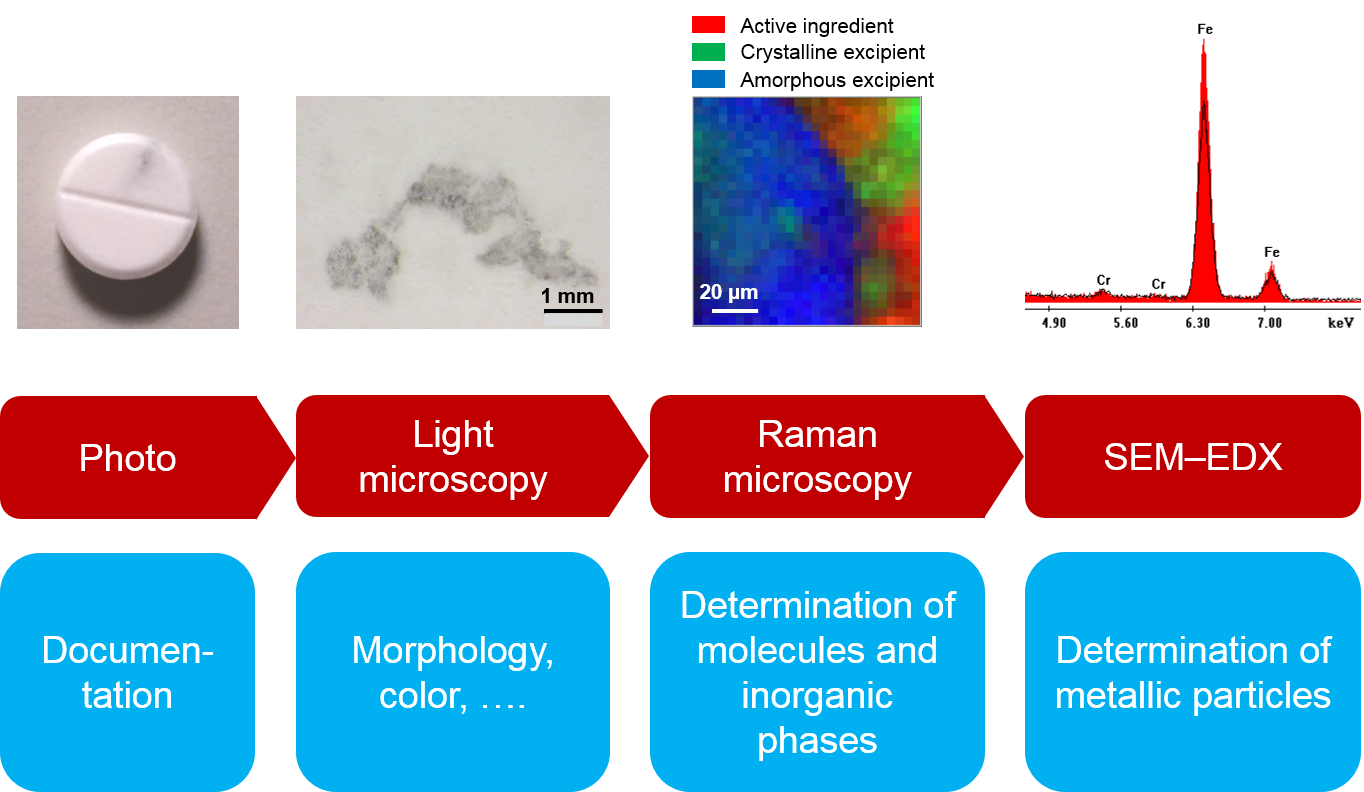Lab course ‘Applied microspectroscopy’
Examples for deviations in quality in chemical industry are contamination particles in solid, powdery or liquid products. Possible origins of such deviations are organic or inorganic contaminations, metal debris from tools, side-products of a chemical reaction, local excessive heat in the reactor, and many more. Thus, analytical labs trying to solve such problems often do not know in advance if these contaminations are inorganic, metallic or organic. Such ‘real-life’ issues can only be solved by combining the complementary information obtained with several analytical techniques, some probing organic compounds, others being sensitive to metallic or inorganic sample constituents. As such contaminations are often microparticles, the use of microspectroscopic techniques is advantageous.

Experience from analyses for industry customers of the Federal Institute for Materials Research and Testing BAM (Thomas Schmid is supported by BAM) inspired the concept of the lab course ‘Applied microspectroscopy’ held at the SALSA Application Lab, which has the goal of teaching SALSA PhD students:
- basic concepts and possibilities of the microspectroscopy instruments in the SALSA Application Lab, also for their own research (light microscopy, Raman microscopy, SEM),
- which analytical information can be gathered with the different techniques,
- how this complementary information can be combined to get a complete picture of an analytical problem,
- the feeling for the ‘detective’ flair and intuition needed to solve real-life analytical problems.

During the lab course, pharmaceutical pills with different types of simulated contaminants, including metallic, inorganic and organic particles, are analyzed and their composition is determined by combining complementary microspectroscopic analytical techniques.
